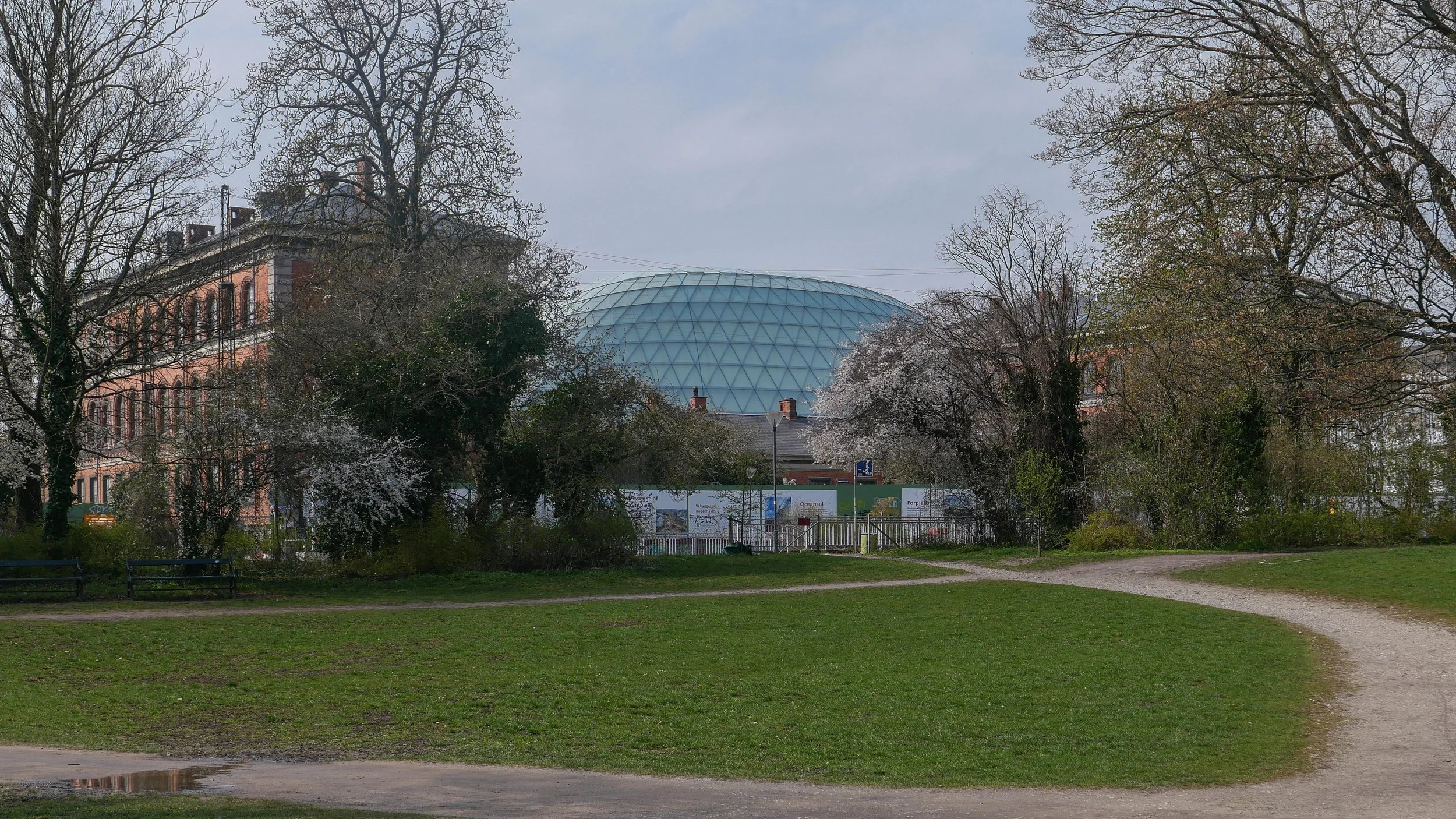update .... Statens Naturhistoriske Museum / National Museum of Natural History
/Today, I was walking back through Østre Anlæg - the park behind the Statens Museum for Kunst - the National Gallery of Art - and realised that the huge cranes that have loomed over the site of the new museum of natural history have been dismantled.
Walking on, along Øster Farimagsgade, it is clear that the main structural work for vast new underground galleries is finished, in what was a massive excavation on the side of the old buildings towards the botanic gardens, and a new landscape is being laid out, over the galleries, for what will be a new public space.
The new National Museum of Natural History will bring together, as a single organisation, the Botanical Gardens, and the national Geological and Zoological Museums in a merger that was first announced back in 2004 and this building will provide not just extensive exhibition galleries but also space for the storage for a large natural-history collection, along with laboratories, teaching collections and facilities for major research.
There have been botanical gardens in the city since the 17th century which included the royal Hortus Medicus where plants were collected for study and for their use in making medicines.
The present gardens were laid out on the Østervold, or the eastern defences, after the city gates were demolished in the middle of the 19th century. The first new building was an observatory on the highest point of the area but the great green house - the Palm House - was completed in 1874 and the botanic garden opened to the public that year.
A Botanical Museum was completed in 1877.
Buildings at the north corner of the gardens, now being adapted to house the new museum of natural history, were completed in 1889 as a technical college or polytechnic for engineering .... first with chemical engineering in one range and physical engineering in the other and the professors in the back range of the courtyard.
As the college expanded, a new range was built in a similar style that extends along Øster Farimagsgade and provided teaching space and laboratories for the study of electrical engineering. All these buildings will now be part of the new museum.
A new main entrance will be from Øster Farimagsgade but there will also be an entrance from Solvgade with with a glass bridge taking the public through the upper part of a new Ocean Hall that is beneath the new dome in the entrance courtyard.
The architects for this major work are Lundgaard & Tranberg Arkitekter.
The buildings will be handed across to the museum this year and it will open to the public in 2025.
a new Natural History Museum …
Lundgaard & Tranberg Arkitekter
Natural History Museum of Denmark
Sølvtorvet, København
Botanisk Have .... historic buildings in and around the Botanical Gardens
① Østervold Observatory 1861 by Christian Hansen (1803-1883)
② Palm House 1872-1874 by Peter Christian Bønnecke
③ Botanisk Museum 1877 by H N Fussing (1838-1914)
④ Den Polytekniske Læreanstadt / Technical and Engineering College
1889 by Johan Daniel Herholdt (1818-1902)
⑤ Botanical Laboratory, Gothersgade 1890 by
Johan Daniel Herholdt (1818-1902)
⑥ Mineralogisk Museum 1893 by Hans Jørgen Holm (1835-1916)
⑦ Building for the department of electrical engineers 1906 by
Johan Emil Gnudtzmann (1837-1922) - a student of Herholdt
⑧ The King's Garden and the 17th-century Palace of Rosenborg
⑨ Statens Museum for Kunst 1889-1896 by Vilhelm Dahlerup (1836-1907)
and Georg E W Møller (1840-1897)
⑩ Nørreport railway and metro stations
Lundgaard & Tranberg Arkitekter









































